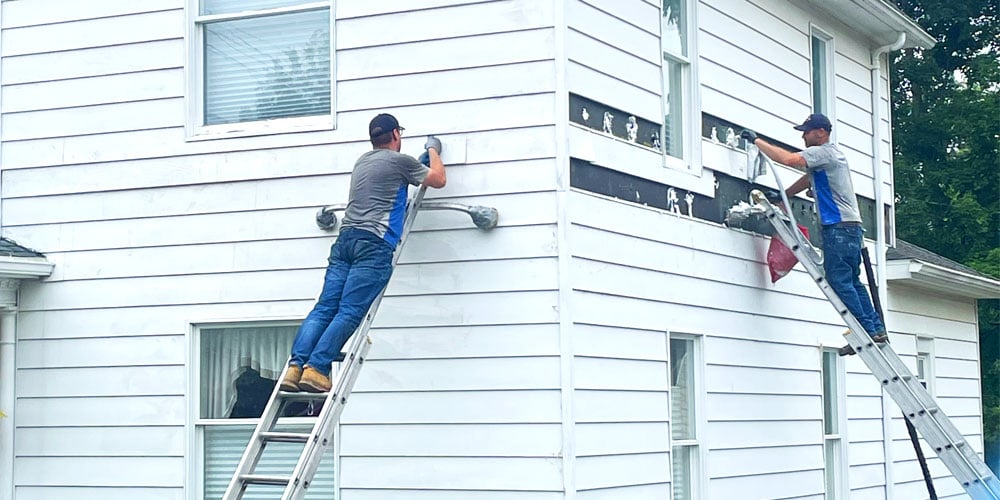Insulating Your Three-Story Home: A Guide to RetroFoam Install Process


Are you living in a three-story house and wondering about the feasibility of insulation with RetroFoam?
The good news is, it's not only feasible, but the process is also quite straightforward, even for homes with unique architectural features like walk-out basements.
Understanding the Installation Process
Firstly, it's essential to bust the myth that three-story houses present insurmountable challenges for insulation.
Whether you have a walk-out basement or a traditional three-story structure, the installation process for RetroFoam remains remarkably similar to that of a standard home.
The primary difference? The installation crew will require a taller ladder.
Handling Complications with Ease
Sure, additional considerations come into play with higher buildings, especially in terms of ladder stability and navigating tight spaces between closely built houses.
However, these are common scenarios for seasoned contractors who know how to adeptly manage such situations. So, while there might be some added complexities, they certainly don't hinder the overall feasibility of the project.
There are instances where no matter how tall the ladder is, the install for that third floor will need to be done from the inside.
Luckily, there’s no need to tear out the drywall for the install to happen inside. The RetroFoam installers will drill holes into the drywall in each stud cavity to inject the foam. Once the foam is injected, the holes are filled with a plug, and a rough patch of drywall mud is spread across where the hole was made.
Special Attention to Walk-Out Basements
Now, let's delve into the specifics of insulating walk-out basements.
The approach here depends largely on the basement's use.
If it's a recreational or living space, you might want to consider insulation from the inside, especially if the area has been remodeled with studded walls. Again, this is an instance when the injection foam insulation is installed by drilling into the drywall to inject the foam.
The Case of Underground Basements
In underground basements, especially those with poured concrete or block construction, insulating from the inside is often the only option due to inaccessibility from the outside.
This approach ensures effective insulation while accommodating the unique structural elements of your home.
Communication is Key
Regardless of your home's structure, be it three or four stories, effective communication with your contractor is crucial.
Ensuring that both parties are on the same page regarding the scope and specifics of the project will facilitate a smooth installation process.
Finding the Right Contractor
To get started with insulating your tall home, connect with a local RetroFoam dealer.
They can provide tailored solutions to make your home more comfortable and energy-efficient.
Remember, when it comes to building and insulation, knowledge is power.
By understanding the specifics of the RetroFoam install process, homeowners of three-story buildings can confidently approach their insulation needs. With the right contractor and a clear understanding of the process, ensuring a comfortable and energy-efficient home is well within reach.
Related Articles
Adding Insulation to Exterior Walls: Installing RetroFoam with Different Siding Types
Insulating Exterior Walls from Inside with RetroFoam
What are the Best Options for Insulating Concrete Block Walls?
About Eric Garcia
Eric brings his knowledge and training in building science, training in spray and injection foams from the manufacturers, more than eight years installing foam insulation, as well as selling and managing in the foam insulation industry. He is also BPI and Dale Carnegie certified and has taken several building science courses, including air sealing and building envelope. Eric is the Professor of Foam on our educational YouTube series Foam University. Even when Eric is off he is usually still “working” or thinking about work, but when he can get away he enjoys camping, hiking, hunting, and woodworking.



